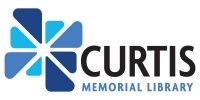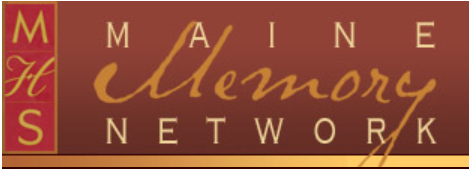Recent Genealogy Posts:
What to keep and what to throw away

The article “Minimalism and Family History: Part II by Alison Taylor provided a very practical method for working my way through the paper files, asking myself the following questions as I sort:
Do I know what this is? If you don’t know what it is, toss it.
Do I care about this any more? Will my children ever care about it?
Would I want to include this in a book of my life stories someday? If it helps tell the story of your life or if it would be interesting to future generations, keep it for now.
Is it a duplicate? You only need one. Pick the best quality copy and pitch the rest.
Is it large and bulky? Snap a photo of your kids’ dog-eared second-grade science project and let it go.
Is it accessible online? This especially applies to old printed genealogical data, like pedigree charts from your great Aunt Martha circa 1973. If that data is stored on your computer, or now resides in Family Search or Ancestry, pitch it!
This next article was discovered in FamilyTree Magazine (What to Keep and What to Toss) and was short and simple. It provided three key headings for your sorting: Save, Skim then trash; Trash. It was a bit too simplistic for me but might be perfect for someone else.
Another good article came from the Family Curator blog who provides 7 questions to ask yourself to help decide what to keep and what to throw out. 3 “yes” answers says you should probably think carefully about putting that object in the “keep” pile.
- Do I have the resources to care for this?
- Is this the only keepsake from my ancestor?
- What is my relationship to the owner?
- Was this item saved as a family heirloom?
- How old is it?
- Is it valuable?
- Is it priceless to me or to our family?
Finally, I’ll share a few tips that I uncovered in my reading:
- If you have memories associated with a keepsake but don’t want to keep that item any longer, take a picture of it to remind you of your memories – and then let it go.
- When you are weeding/decluttering don’t stop and start to read documents in great detail. If you do, you will never finish your project. Just read enough to figure out what is in the document and how you are going to treat it.
- Remember that items don’t have magical properties, memories do — getting rid of something your loved one owned isn’t getting rid of that person
These articles have provided me with some very helpful guidance for my weeding project. I hope they do the same for you! Happy research!
Brigham Young University Family History Library

If you go here it will take you to their Subject List page. It is exhaustive and I’m still working my way through what they have available for free.
Most of my research is focused on Canada so I tend to look for new resources in that geography. I’ve been doing genealogy long enough now that I don’t find new resources all that often. But, on this website I did.
I found the “Historical Atlas of Canada Online Learning Project” at http://www.historicalatlas.ca/website/hacolp/ The site has interactive maps around specific events in Canadian history – fascinating. Here’s how the website describes itself:
The Historical Atlas of Canada was a three-volume collaborative research and publishing project, finished in 1993, which used maps text and other graphics to explore themes in the history of Canada. The Historical Atlas of Canada Online Learning Project is intended to make the maps and data generated for the Atlas available to a wider audience by
re-designing them for the Internet.
Some of the identified resources are links to other websites and some are BYU Family History Library websites. There is also a link to free online genealogy webinars – definitely worth taking a look at. You can find that page here.
I hope you have a great 4th of July and the opportunity to do lots of genealogy. Happy research!
Canadian Cousins!

This week I got an email from a cousin who wasn’t as distant. Turns out that her grandfather and my grandfather were brothers and I actually remembered meeting some of her family when I was young and we would take trips to Canada. We sent emails back and forth figuring this out and then she sent me a photo of my grandfather and three of his brothers that I also had. Bingo – we were definitely second cousins!
My grandfather was the one who “went to the U.S.” and really wasn’t heard from much after that by the Canadian relatives. So, in her genealogy research my grandfather represented the unknown branch of the family. That was kind of strange – I never felt like I was “lost”!
We had a great time emailing and I’m guessing that if there is an opportunity to connect in person in the future, we will do that. In the meantime I have added names to my family tree and made a new friend. And, that is what I call a good day for a genealogist. Happy research!
Digital Public Library of America

From their website: The DPLA connects people to the riches held within America’s libraries, archives, museums, and other cultural heritage institutions. All of the materials found through DPLA—photographs, books, maps, news footage, oral histories, personal letters, museum objects, artwork, government documents, and so much more—are free and immediately available in digital format.
The DPLA is a nice resource for genealogists because you can search for information at a local level by going to https://dp.la/map . There, a map shows 567,353 results with location coordinates from over 120 contributing institutions. You can click on the map to get to the place which interests you.
You can also search by timeline which is fascinating – go to https://dp.la/timeline . There is a slider that can move from year to year and will tell you how many items are available from that year from the DPLA collection. Included you’ll find maps, books, oral histories, letters, and much more.
I did a quick search on my family name and found a photo of my father from when he was in school that I had never seen before. Now I’m hooked and I would definitely recommend checking the website out. Happy research!
Below are links to some genealogy resources – please note that HeritageQuest requires a Portland Public Library (PPL) card. For information on getting a PPL card (all Cumberland County residents are eligible), click here. Curtis Library has a card and can use it to get you access when you are in the library. Access to American Ancestors is through Curtis Library’s subscription and can only be used from inside the library.







